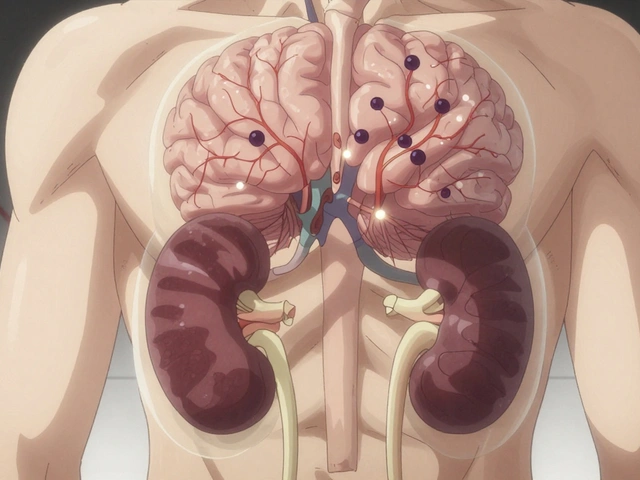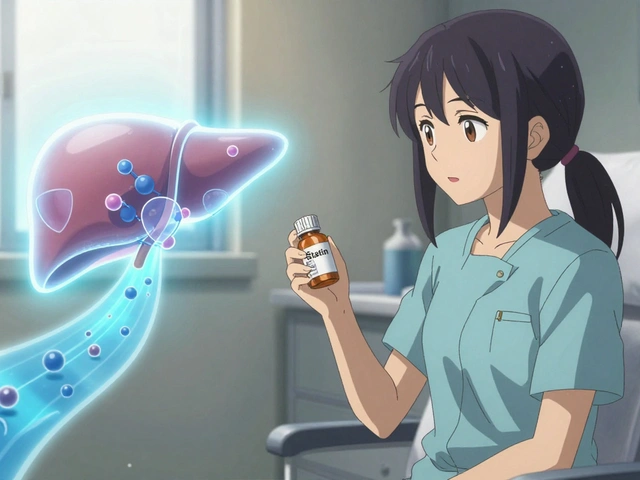Esophageal Inflammation
When dealing with esophageal inflammation, the swelling and irritation of the esophagus lining, often caused by acid reflux, infection, or medication side‑effects. Also known as esophagitis, it can bring pain, trouble swallowing, and long‑term risks.
One of the biggest drivers of this condition is gastroesophageal reflux disease (GERD), a chronic back‑flow of stomach acid into the esophagus that continuously irritates the tissue. When GERD goes untreated, the repeated acid exposure can evolve into Barrett's esophagus, a precancerous change where the normal lining transforms into a more resistant, but risky, cell type. Understanding how these entities interact helps you see why early diagnosis and targeted therapy matter.
What Triggers Esophageal Inflammation?
Most people think only about heartburn, but a range of factors can set off the inflammation. Acid reflux from GERD is the top culprit, especially after big meals, spicy foods, or lying down too soon. Certain medications—like NSAIDs, bisphosphonates, or antibiotics—can erode the protective mucus layer, making the lining vulnerable. Infections such as Candida, herpes, or CMV are common in people with weakened immune systems and can cause a distinct form of esophagitis.
Lifestyle habits matter too. Smoking reduces saliva, which normally neutralizes acid, while excessive alcohol intake directly irritates the mucosa. Obesity increases abdominal pressure, pushing stomach contents upward. Even intense physical activity right after eating can force acid upward, leading to occasional inflammation spikes.
Another hidden trigger is food allergies or eosinophilic esophagitis, where the immune system reacts to specific proteins, causing white‑blood‑cell buildup in the esophagus. If you notice symptoms flare after certain foods, it’s worth tracking your diet.
All these triggers share a common thread: they damage the esophageal lining, prompting the body to send blood‑borne immune cells to repair the tissue. That repair process is what we recognize as inflammation.
Because the esophagus doesn’t have a thick protective layer like the stomach, it reacts quickly. That’s why even short‑term exposure to harsh acids or irritants can produce noticeable discomfort.
Managing the root causes—whether it’s controlling GERD, adjusting medication timing, or eliminating allergens—lays the groundwork for effective treatment.
Speaking of treatment, the go‑to class of drugs is proton pump inhibitors (PPIs). These meds, such as omeprazole or esomeprazole, esophageal inflammation heavily relies on, lower stomach acid production and give the esophagus a break to heal. They’re often paired with lifestyle tweaks: eating smaller meals, avoiding late‑night snacks, elevating the head of the bed, and cutting out trigger foods like citrus, chocolate, and caffeine.
If PPIs aren’t enough, doctors might add H2 blockers, antacids, or alginate‑based formulations that create a foam barrier. For infection‑related cases, antifungal or antiviral courses target the underlying pathogen. When eosinophilic esophagitis is diagnosed, swallowed steroids or dietary elimination plans become the main strategy.
In severe or refractory cases, endoscopic procedures can help. Dilating a narrowed esophagus restores proper swallowing, while radiofrequency ablation can remove abnormal Barrett's tissue. Regular endoscopy is the primary tool for monitoring Barrett's esophagus and catching early dysplasia.
Beyond medication, simple habits make a big difference. Staying upright for at least two hours after meals, chewing gum to boost saliva, and maintaining a healthy weight all reduce reflux episodes. Some people find relief with natural approaches like ginger tea, aloe vera juice, or slippery elm, but these should complement—not replace—doctor‑prescribed therapy.
When you combine proper diagnosis, targeted medication, and sensible lifestyle changes, most people see symptom relief within weeks and tissue healing over months. The key is to address both the symptom (pain, heartburn, difficulty swallowing) and the cause (acid exposure, infection, allergy).
Below you’ll find a curated list of articles that dig deeper into each aspect of esophageal inflammation. From the latest research on antibiotics that might affect gut flora and reflux, to detailed comparisons of medications used for related conditions, these posts give you practical, up‑to‑date information to help you manage your health.

Erosive Esophagitis & Celiac Disease: Understanding the Link
Explore how erosive esophagitis and celiac disease are linked, what symptoms overlap, how doctors diagnose both, and effective treatment steps to manage the duo.
Continue Reading



